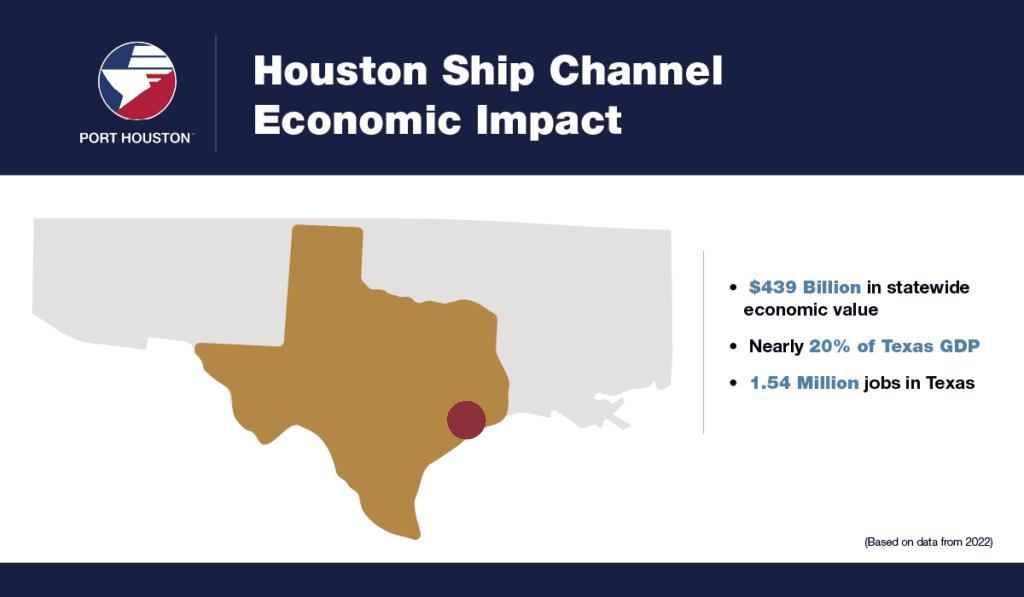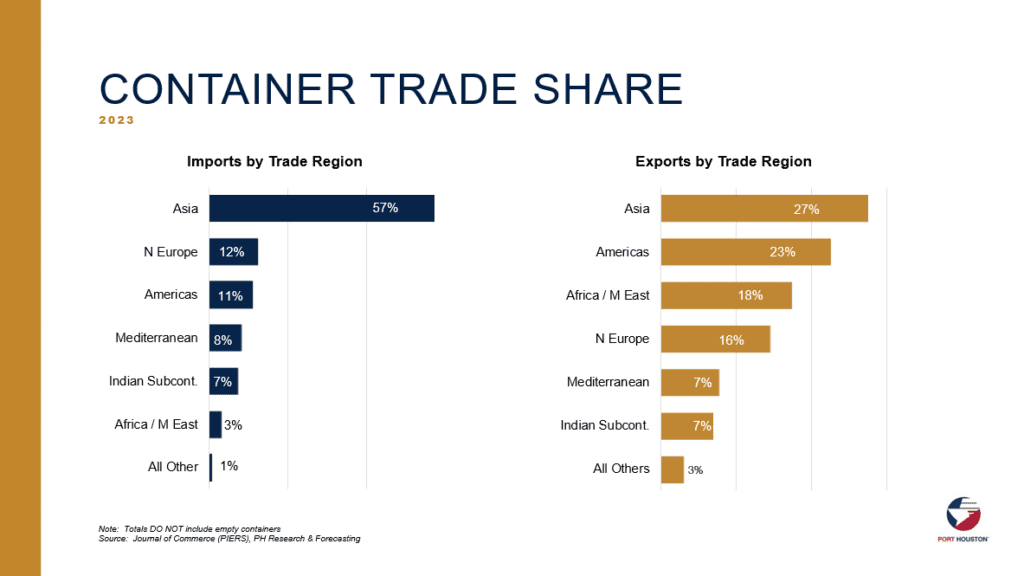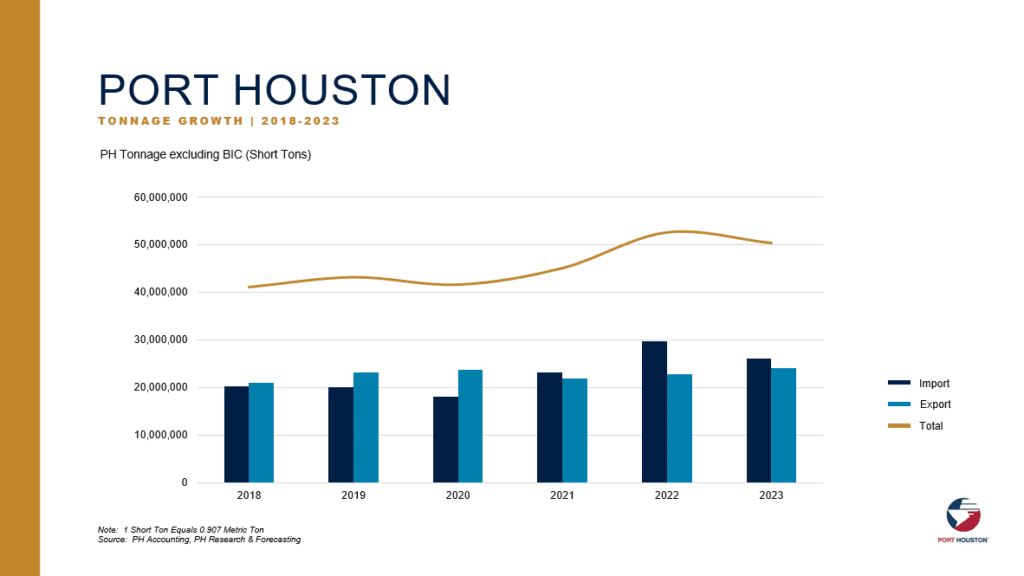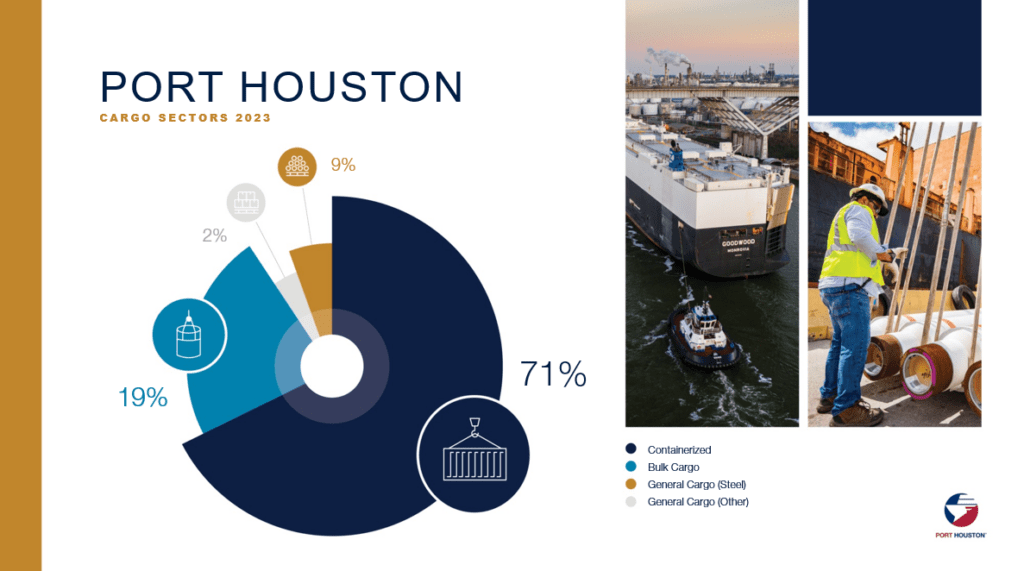Port Statistics
Trade Highlights and
Performance Data
The Houston Ship Channel complex and its more than 200 public and private facilities is the nation’s largest port for waterborne tonnage, and an essential economic engine for the Houston region, the state of Texas, and the U.S.


Economic Impact of the Houston Ship Channel

The Houston Ship Channel complex and its more than 200 private and eight public terminals, collectively known as the Port of Houston, is the nation’s largest port for waterborne tonnage and an essential economic engine for the Houston region, the state of Texas, and the U.S. A 2022 study by Martin Associates reports that business activity at the Port of Houston supports 1.54M jobs throughout the state of Texas and 3.37M jobs nationwide. This activity helps generate more than $439B in statewide economic value and $906B in nationwide economic value. Moreover, the Houston Ship Channel contributes nearly $10.6B in state and local tax revenue and $62.8B in national tax revenue.
Click to download the state impact executive summary.
Click to download the full state impact report.
Click to download the national impact report.
Statistical Highlights for Port Houston
-
5th ranked U.S. container port by total TEUs
-
Largest Gulf Coast container port, handling 73% of U.S. Gulf Coast container traffic
-
Largest Texas port with 97% market share in containers
Statistical Highlights for the Houston Ship Channel complex
-
1st ranked U.S. port in foreign waterborne tonnage – 220.5 million short tons (2022)
-
1st ranked U.S. port in total foreign and domestic waterborne tonnage – 266 million short tons (2021)
-
2nd ranked U.S. port in terms of total foreign cargo value ($240.1 billion) 2022
-
Largest Texas port with 38% of market share by tonnage
Sources: USACE Navigation Data Center (facts 1,2), U.S. Dept. of Commerce Bureau of Census, Customs Data from Census Bureau (fact 3), Journal of Commerce PIERS (facts 4 and 5), American Association of Port Authorities (fact 6).



Statistical Data in Depth
- Monthly Statistics Overview
- Container Volume by Trade Statistics (annual)
- Container Volume by Trade Statistics (Y.O.Y)
- Container Volume by Country Statistics (annual)
- Container Volume by Commodity Statistics (annual)
- Annual Summary of Port Houston Cargo Tonnage Statistics
- Detailed Monthly Container Performance Statistics